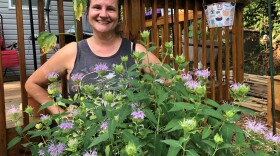-
The first English word for “lawn” dates back to the early 1500s, described as an “open space among trees.” Lawns today are a far cry from that description, but they’ve come to dominate our physical — and cultural — landscapes. Now concerns over environmental impacts are propelling yet another redefinition.
-
New findings from a St. Louis pilot study show bee pollinator habitats along highway corridors can potentially increase bee populations and improve food sustainability efforts.
-
Two major broods that show up on 13- and 17-year cycles will crawl out of the soil and head to treetops to sing and mate. It’s the first time these two broods have emerged at the same time in 221 years.
-
At least three states have banned these trees outright, and others discourage the public from adding them to their yards.
-
Entomologists say insects are declining at alarming rates — one major study estimates we’re losing 2% in total insect biomass every year. Now, the National Academy of Sciences is preparing to embark on a study to understand insect trends across North America.
-
Kansas officials have recorded 22 cases of humans being infected so far this year. The Kansas Department of Health and Environment issued a warning of high-risk of the mosquito-borne disease for almost the entire state.
-
The longhorned tick has only been in Missouri for a couple of years, but it is already spreading across the state and can carry a disease that can infect cattle. There are currently no known treatments or vaccines for the disease, and it could cost ranchers a lot of money.
-
It’s tick season — and they're a problem all throughout Missouri, not just in rural areas. And there's a real risk of tick-borne illnesses like Rocky Mountain Spotted Fever and Lyme disease.
-
Scientists at the U.S. Geological Survey are studying how environmental contaminants like pesticides and antibiotics are impacting butterfly and moth populations.
-
Ellen Finnerty dreams of beekeeping and of supplementing the income from her warehouse job by selling products from her garden.
-
Learn just the right way to swish a net, snap a pic and upload it to Xerces Society scientists hungry for information about the bumblebees near you.
-
At one time, Missouri had approximately 15 million acres of prairie, which have have some of the richest soils on Earth and are important habitat for wildlife.
Play Live Radio
Next Up:
0:00
0:00
Available On Air Stations











